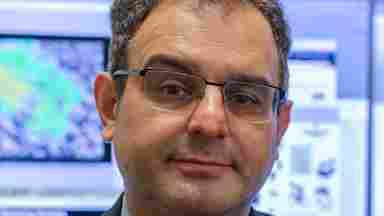Overview
For the first time, the method of four-dimensional variational data assimilation is applied to the analysis of chemically active trace species. By combining observations with a numerical model to analyze simultaneously several species over a period of a few days, the analysis method is able to exploit information which is not available to conventional analysis techniques. Moreover, effective use can be made of asynoptic observations even for species which have strong diurnal cycles. Synoptic analyses are produced. A Lagrangian approach is adopted, allowing a separation of dynamics and chemistry which considerably reduces the computational expense of the method.
Differences between observed and analyzed mixing ratios. (a) 03 (ppmv), @) daytime NO:! (ppbv), (c) night-time NOz(ppbv). Unshaded areas indicate differences in the range 10.5 units. Light, medium and dark shaded areas indicate differences in the ranges 11, f2 and more than f4 units, respectively. The locations of the observations used for the analysis are shown in the lower plots.

